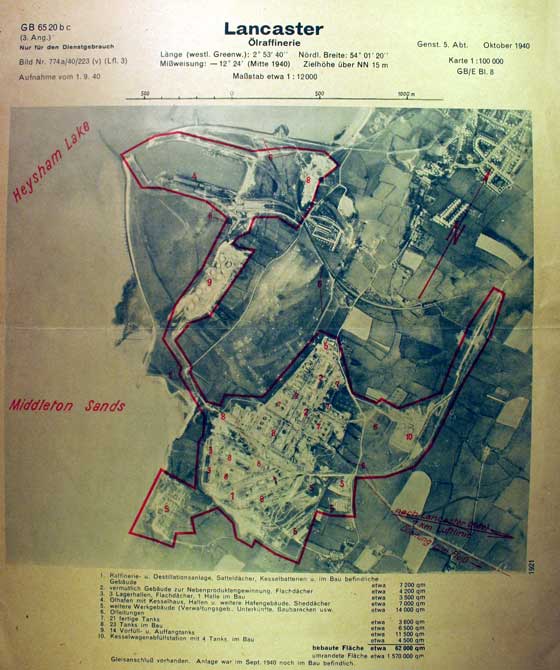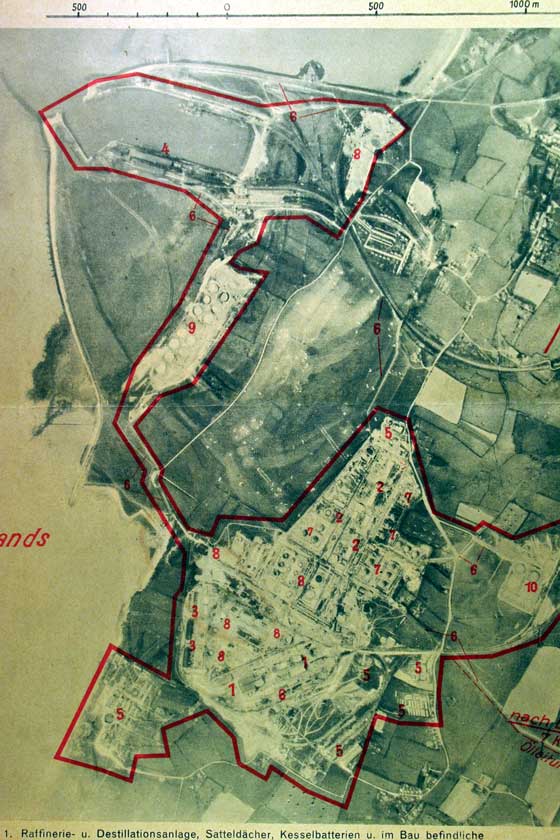 |
King's Own Royal Regiment Museum Lancaster |
|||||||||||||||||||||||||||||||||||||||||||||||||||
|
HOME Museum & Collections Soldiers of the Regiment Sales Donations Events Contact Us REGIMENTAL HISTORY 17th Century 18th Century 19th Century 20th Century First World War Second World War Actions & Movements Battle Honours FAMILY HISTORY Resources Further Reading PHOTO GALLERY ENQUIRIES FURTHER READING LINKS |
Regimental History: Second World War The Home Guard and the Defence of Morecambe Home Guard Archives in the Museum's Collection The 4th County of Lancaster (South Lonsdale) Battalion Home Guard (EL4) was established at the Police Station in Skerton under the direction of Lieutenant Colonel O H North and Colonel J Bois. Colonel Bois took command shortly afterwards. Bois had commanded the 2nd Battalion King’s Own in the First World War in the Macedonian Campaign. Map showing areas covered by the local Home Guard units. Seven Companies were established in May 1940 and operated until August:
Exactly why there was no number 7 company in the original order of things no one knows! In August 1940 a major reorganisation took place:
Units were later created to guard Carnforth Railway Junction, Heysham Harbour and the Trimpell works. The Trimpell Works in Heysham is named from an amalgam of Trinidad Leasing, Imperial Chemical Industries and Shell. The site was set up in 1939 as the Heysham Aviation Fuel Works to produce aviation fuel for the Royal Air Force. Starting with coke brought in from the Durham coal field and imported gas oil ICI produced base petrol and ammonia. Shell produced iso octane from the gas oil to boost the base petrol to aviation standard. The main site was sponsored and paid for by the Ministry of Aircraft Production. The Ministry of Supply funded a Nitric Acid and Ammonium Nitrate plant for explosive purposes. This was also run by ICI. The site initially was run by Trimpell, a wholly owned subsidiary of ICI, Shell and Trinidad Leaseholds. After the war Shell and ICI bought the site but retained the name 'Trimpell'. The Trimpell works was under construction when it came to the notice of the German air force. On 1st September 1940 the German Luftwaffe took an aeriel reconnaissance photograph of Heysham Harbour and surrounding area. They highlighted important targets including the new oil installations associated with the Trimpell Refinery.
Key to photograph: 1. refinery and distillation plant and buildings
under construction The ‘Wildfowlers’ Company had specific duties to patrol the marshes of Morecambe Bay. The members of the company all knew the area well - as they either worked or lived near the shore. They would be familiar with the wildlife, the marshes and the tides. Many also had their own shotguns and rifles for shooting game and so were some of the first Home Guard equipped with weapons in this area. Richard Harland served as a member of the Wildfowlers Company during the war: “On 13th July 1940 General Headquarters Home Forces advised slit trenches against dive bombers. This excellent advice goaded us all into a frenzy of activity and excavation was commenced on the shore at Red Bank above the high water mark and from a point of vantage from where we could also pick off any unwelcome personnel on the sands.” “One night a week our section met at the George Hotel in Torrisholme where, amongst other activities, we indulged in arms drill in a large and convenient private room” “It was about November 1940 that an RAF plane made a forced landing on the sands which would have had no ill effects had not hundreds of concrete posts been driven therein to prevent just such a happening. One wing was definitely the worse for wear and the plane was taken over by the local wing of the RAF, who brought it up to our guard house where they eventually took it to pieces and carted it off by instalments.” “Up to Christmas 1940 our patrols and training were little out of the ordinary. It became almost a nightly occurrence to log ack-ack fire and bomb bursts due South of us which was Liverpool way. Our hearts went out to the people who suffered these raids so frequently. Just before Christmas there was a terrific blitz about 40 degrees East of the usual place which eventually proved to be Manchester and Salford. Bill and I were on duty Christmas Eve and encountered a gentleman and his wife who had just come from Manchester in his car to a caravan he kept on the shore. Poor chap, he was absolutely ‘full up’ and seemed really relieved to find someone to talk to. His story was pretty awful and he had no end of trouble getting out of Manchester. Nearly every turn he took was blocked either with debris or fire squads. Our quiet beach seemed almost unreal to him after the nightmare he had been through.” “A demonstration was arranged for the 4th May 1941 with 2 inch and 3 inch mortars by the military unit at Middleton Towers, previously a holiday camp which had been taken over early in the war for army occupation” “Then came our bit of action when we really felt we were doing something. Our mobile column was called out one night and told to make their way to F Company headquarters at Galgate. Corporal Wilson in an Austin 7 picked me up and we made as speedy journey as possible to Galgate. It appeared that some parachutes had been found in the area between Dolphinholme and the Trough of Bowland but no bodies were forthcoming so, as this was in the battalion area, it was obviously up to the mobile reserve to get busy.......for the remainder of the night we patrolled up and down and eventually returned to Galgate from where we made our way home to a welcome breakfast and the less welcome ordeal of a day’s work. The following night the performance was repeated, but again we drew a complete blank. Later we heard a rumour that two men had been driven from their cover on the other side of the fells in the Chipping area and came to a sticky end at the hands of the local Home Guard. However, rumour is a fickle jade and our speculations eventually faded into obscurity.” “The Saturday nights in camp were always a pleasure and the customary outcome usually took the shape of a game of some sort whereby some became richer and others poorer but wiser men. However, our efforts in this direction were kept on a fairly conservative basis and one of the popular attractions was Ted Travis’ game of Housy-Housy.” The 4th Battalion, like the other units of the Home Guard, was stood down with an official parade on 3rd December 1944. John Read served in the Home Guard, he recorded in 1991: “Morecambe Home Guard Headquarters were at the Drill Hall on West End Road, now the Salvation Army Citadel. I joined at the age of 16 in May 1943 and thought it all a great adventure. I was in the Wildfowlers Platoon of Headquarters Company which met above the old Palladium Cinema. I drilled two nights a week and enjoyed overnight guard duties and weekend exercises spent on the firing range at Crag Bank. Morecambe Home Guard had its own band and I played the side drum, under the direction of Cecil Hopkinson. We were in great demand especially on Sunday Mornings for church parades around the district” |


